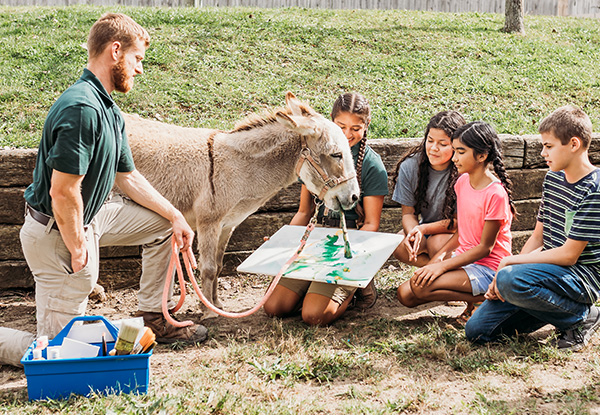Donkey
Donkeys descended from African wild asses. Most are domesticated or feral today, but wild donkeys still roam Northern Africa.
Day of Creation: six
Biblical Kind: horse (includes horses, donkeys, zebras, and wild asses)
Status: domesticated
Height: 2–5 feet (0.6–1.5 meters)
Weight: 200–1,000 pounds (91–454 kilograms)
Habitat: northern Africa, but domesticated worldwide
Lifespan: 30–35 years
Diet: grasses and shrubs
Family Life: live in herds
Reproduction: single foals are born after 12-month gestations
Fun Facts
Donkeys have been used as working animals for thousands of years. They are also used for milk and meat and as guard animals for livestock. They can survive on very little food and water in almost any habitat. Because of their intelligence, hardiness, and outgoing personalities, they also make excellent pets.
The word “donkey” comes from their common dun coloration, plus the suffix “ky,” meaning “small.” However, donkeys come in all colors, not just dun. There are multiple, vaguely defined breeds of donkeys, but they are generally grouped into three sizes: miniature, standard, and mammoth. Male donkeys are called jacks, and females are called jennies. “Burro” is the Spanish word for donkey.
Species in the horse kind can interbreed and create hybrids. A cross between a male donkey and a female horse is a mule, while a cross between a male horse and a female donkey is a hinny. Zebras can also breed with horses and donkeys to create zorses, zonkeys, hebras, or donkras.
Donkeys have excellent vision and hearing, and their long ears can move independently to locate the sources of sounds. These ears also have a high blood supply, which helps cool their bodies in the heat.
Donkeys have a reputation for being stubborn. In reality, they are simply very observant and cautious animals and will refuse to do anything that appears threatening. When donkeys are suspicious of something, their instinct is to freeze or run a few steps and then look back to examine the threat.
